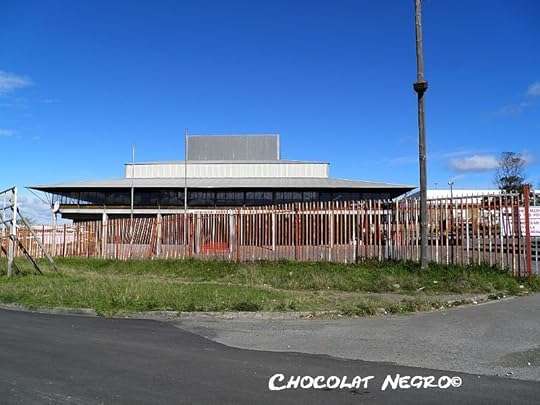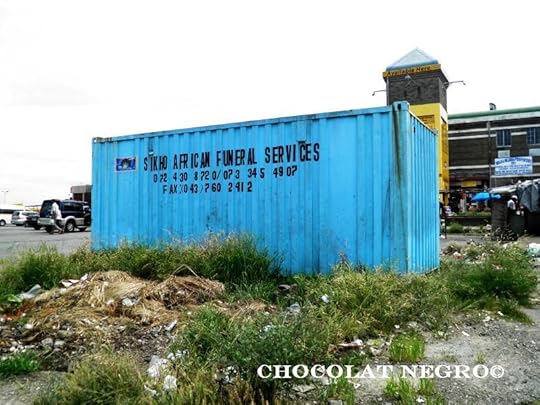Isabella Fischer's Blog: The Mdantsane Way, page 11
November 4, 2012
Mdantsane - Another African Story - THE MAKING OF THE MOVIE

LordAxHooper in great form!
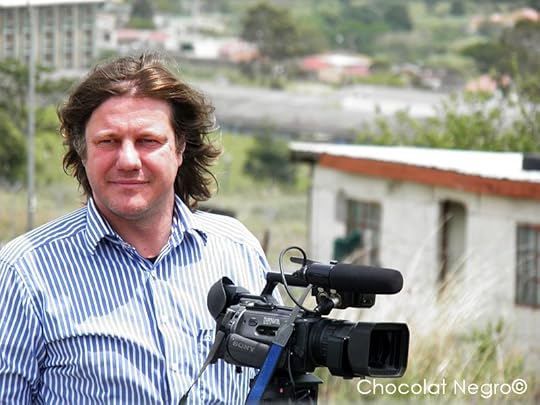
At his best! Thanks to this man and his production company the movie Mdantsane- Another African Story is seeing the light of the day and will be released end of November 2012! Huraay!
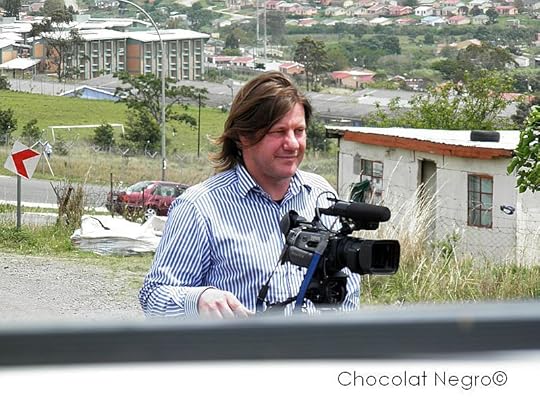
And equally wired is Siseko Tose Tose! The man with the very different voice.
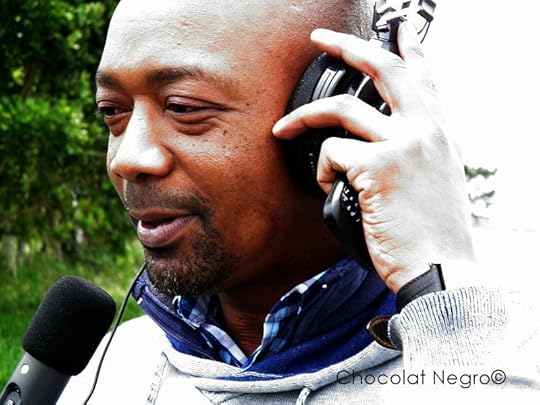
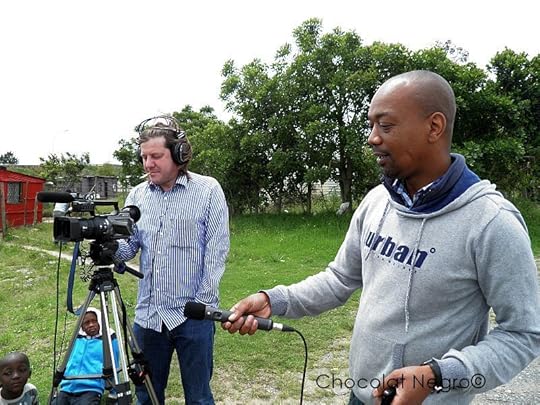
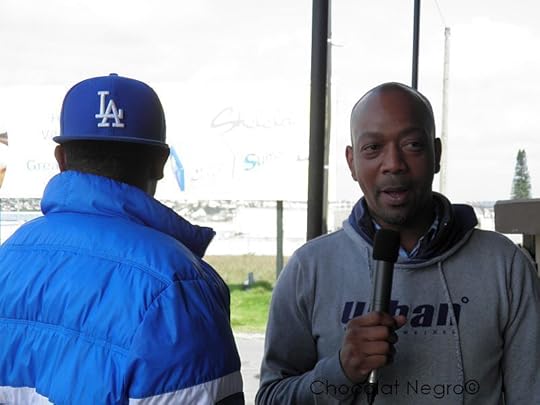
Here you can Siseko Tose Tose interviewing his childhood friend, and now Gangsta Rapper XLCapone The Magnificient in NU 1 at HI-Way. A lot more music is coming your way.
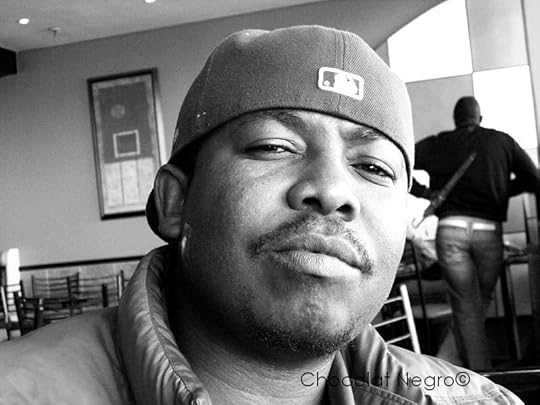
XL (Extra Large Capone) Capone, The Magnificient
Spectators more than enough! And rising in numbers since we are shooting three weeks in Mdantsane.
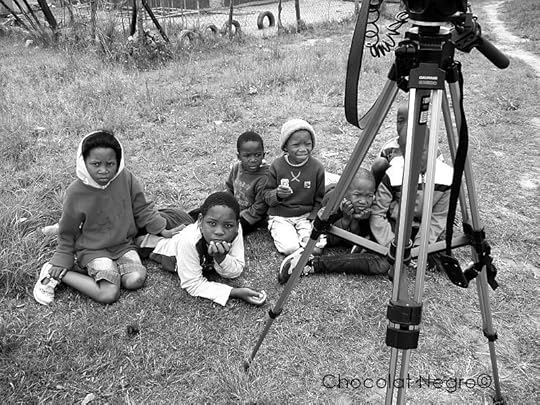
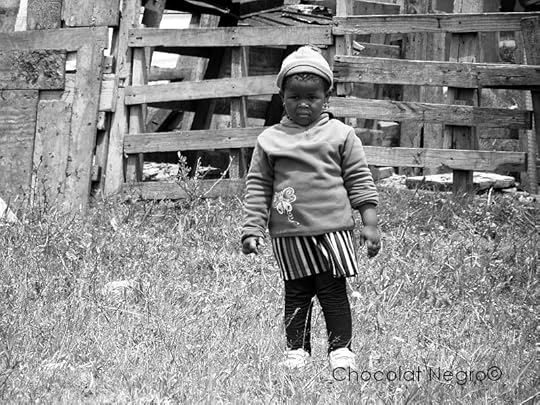
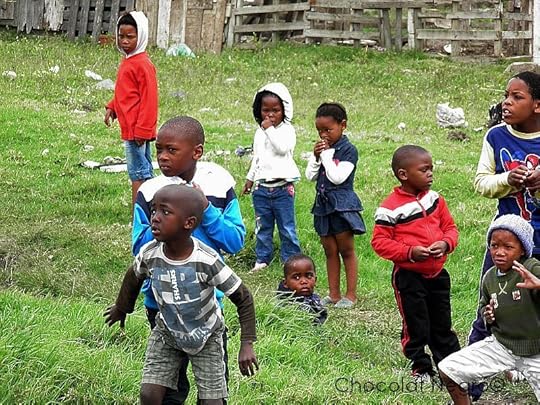
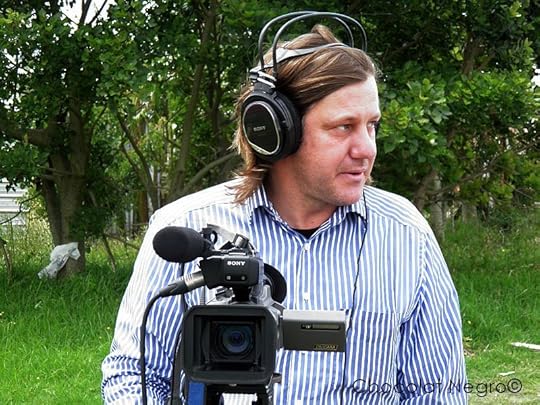
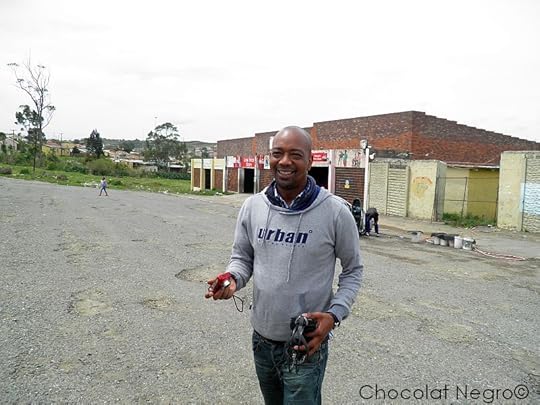
Of course, we will keep you updated on this project!
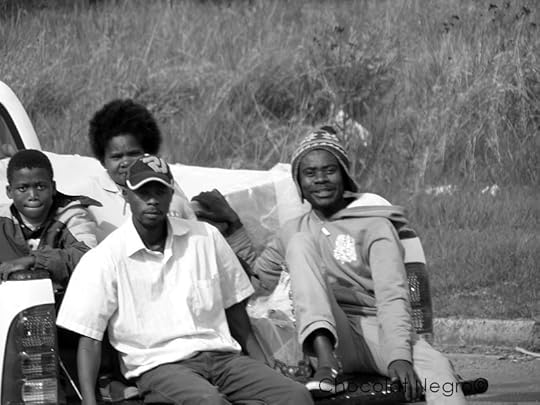
http://feeds.feedburner.com/blogspot/...

October 30, 2012
C O L O R CUTTING Murals In Mdantsane
Here is a small selection of our favorite color murals in Mdantsane. But we not sure that if you go to look for them that you will really find them. Change is everything.http://feeds.feedburner.com/blogspot/...

October 24, 2012
The Mdantsane Tales - So You Will Have A Better Life
The Mdantsane Tales - So You Will Have A Better Life from Chocolat Negro on Vimeo.
"Education is the great engine of personal development. It is through education that the daughter of a peasant can become a doctor, that the son of a mine worker can become the head of the mine, that a child of farm workers can become the president of a great nation. It is what we make out of what we have, not what we are given, that separates one person from another."
Quote from Nelson Mandela from his book " The Long Walk To Freedom".
This movie was made for all the parents and forefathers of the children in Mdantsane and in South Africa. Their children are now at the receiving end of the efforts and the long battle they have fought to get equal education for all South Africans.
In South Africa, education plays a huge role. The government spends 20% of the central budget on education.
Black South Africans were perceived to have the role of labourers and servants. During the 1980s the young population was committed to destroying the education system constructed by the apartheid system. There were strikes and violence that firmly restricted its ability to function in an orderly manner. Despite the huge budget allocated to education since democracy, the effects of apartheid can still be felt 19 years after its demise.
Among the South African population, only 14% of black people have an education of high school or higher, whereas 40% of Indians and 65% of Whites have an education of high school or higher.
Many African societies placed strong emphasis on traditional forms of education well before the arrival of Europeans. Adults in Khoisan- and Bantu-speaking societies, for example, had extensive responsibilities for transmitting cultural values and skills within kinship-based groups and sometimes within larger organizations, villages, or districts. Education involved oral histories of the group, tales of heroism and treachery, and practice in the skills necessary for survival in a changing environment
The Bantu Education Act (No. 47) of 1953 under the Apartheid system widened the gap in educational opportunities for different racial groups. Two of the architects of Bantu education, Dr. W.M. Eiselen and Dr. Hendrik F. Verwoerd, had studied in Germany and had adopted many elements of National Socialist (Nazi) philosophy. The concept of racial "purity," in particular, provided a rationalization for keeping black education inferior. Verwoerd, then minister of native affairs, said black Africans "should be educated for their opportunities in life," and that there was no place for them "above the level of certain forms of labour." The government also tightened its control over religious high schools by eliminating almost all financial aid, forcing many churches to sell their schools to the government or close them entirely
Tensions over language in education erupted into violence on 16 June 1976, when students took to the streets in the Johannesburg township of Soweto. Their action was prompted by the decision of Andries Treurnicht, Deputy Minister of Education in the white government, to enforce a regulation requiring that one-half of all high-school classes must be taught in Afrikaans. A harsh police response resulted in the deaths of several children, some as young as eight or nine years old. In the violence that followed, more than 575 people died, at least 134 of them under the age of eighteen
Youthful ANC supporters abandoned school in droves; some vowed to "make South Africa ungovernable" to protest against apartheid education. Others left the country for military training camps run by the ANC or other liberation armies, mostly in Angola, Tanzania, or Eastern Europe. "Liberation before education" became their battle cry
http://www.mdantsanelife.blogspot.com
http://feeds.feedburner.com/blogspot/...

October 23, 2012
The Mdantsane Indoor Sports Centre
October 22, 2012
The Mdantsane Tales - Shelter Me
Shelter is the most basic of all human needs. Until this need is
satisfied there can be no peace of mind. We are showing the reality of an
informal settlement in the Mdantsane township in South Africa.
The
music was chosen by us because it matches perfectly our images. Music
and Lyrics belong to the unforgettable Louis Armstrong. We do not claim
any rights to it.
"Nobody really knows the trouble you have seen, except Jesus".
If you would like to watch this movie on youtube ( bigger screen) just click the link The Mdantsane Tales.
http://feeds.feedburner.com/blogspot/...

October 21, 2012
Mdantsane, You're My Home
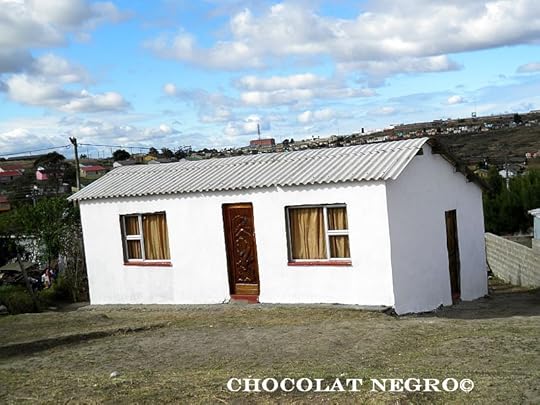
Mdantsane, it seems to me you have a woman's name
so soft and fine,
and I talk to you sometimes like you are my beloved one
because you're beautiful
and you are mine!
Mdantsane you're my home
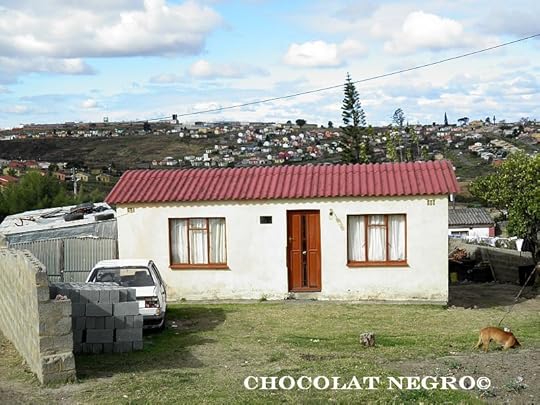
After four days of darkest, deep rain
I see you rise and shine all over and over again
and I know you are truly mine, all mine!
Mdantsane you're my home!
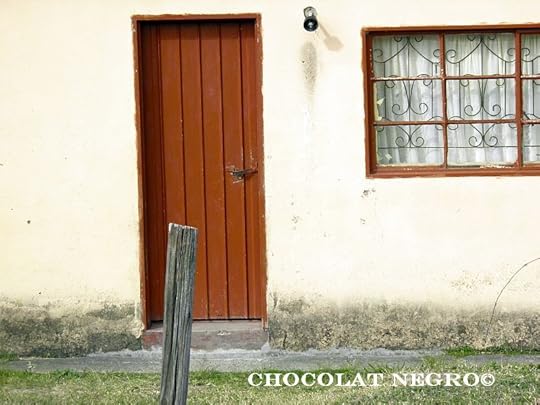
It is hard, real hard to part with you
you're beautiful
and you're mine
and I will leave you only with great pain in my heart

But, Mdantsane you know me so well
I will always, always come back to you
I really can not cheat on you.
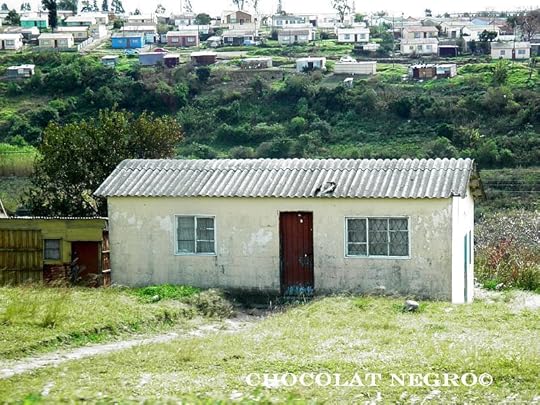
And when I do come back to you
I feel again
that you are mine, all mine
Mdantsane, you're my home!
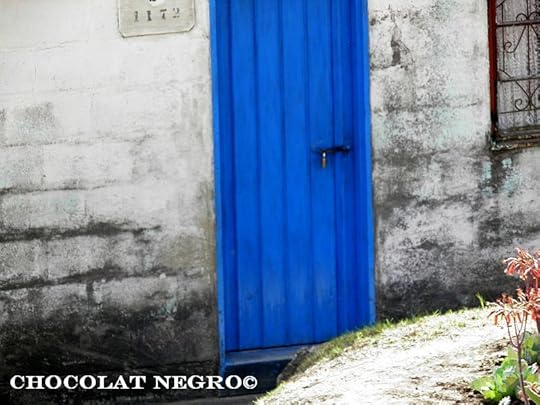
We hope that you enjoy the little poem the editor ( the editor sometimes can get dramatic) has made to express the deep feelings the residents of Mdantsane have for their suburb, their loved one. We feel that the people of Mdantsane have a stronger identification with their suburb than the residents of other suburbs in East London. Maybe this is due to the special history this suburb has. But we do not want to research why this is the case and at the same time it might be a daring, provocative statement to make, that will have others protest and say I love my suburb as much as they do - but we just feel a strong, unconditional love of the residents everywhere in Mdantsane.



http://feeds.feedburner.com/blogspot/...

October 19, 2012
Mdantsane - Sikho African Funeral Services
South African Soccer In 1970 In Soweto
We publish in The Mdantsane Way Magazine a category called South Africa In Retrospective. Here we share not only Mdantsane related images and information but we include stories, images and moments of South Africa's history, that seem remarkable and important to us. The images of events that we publish were not necessarily great historical moments but they convey an important message to us today.
As documentary photographers we have great respect for the work of photographers who have lived and worked before us because they contribute to the massive task to document our world and to allow mankind to remember the many stories of humanity.
This is also the reason why we want to establish a digital archive consisting of historical images and documents for Mdantsane's past. Too much knowledge has already been lost.
The image we want to show you today was captured on film by a photographer named G.Cubitt in 1970 during a soccer match in Soweto and was published in a book about South Africa in 1970, entitled also simply " South Africa. 1970 the Kaizer Chiefs played the Bantu Colliers in this match
It is an amazing image and if you take time to look at it for a couple of minutes and let your eyes glance over each and every face and the emotion it expresses, you can feel your way back to the 1970's when that game took place in Soweto. You can not understand what it meant to be "A Black" in the 1970's in South Africa but you can understand what it meant to watch this soccer match.

Originally entitled : Anxiety and delight mirrored in the expressions of a huge crowd as they watch Kaizer Chiefs and Bantu Colliers play soccer in Soweto
" Soccer is the most popular sport amongst Blacks, many of whom display great natural ability." (quotation from the book South Africa, page 170)
http://feeds.feedburner.com/blogspot/...

October 17, 2012
Another Mdantsane Spaza Shop
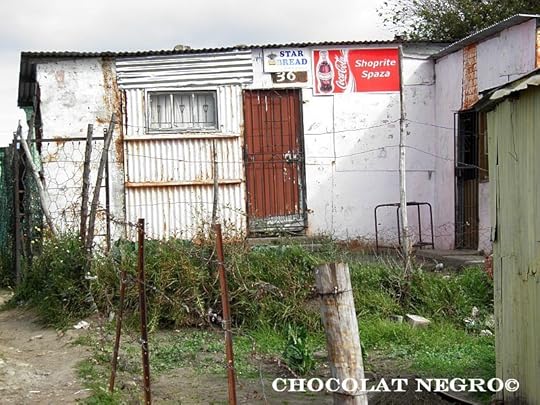
True, there is the mall now, but spaza shops are and will be an institution!


http://feeds.feedburner.com/blogspot/...

Mdantsane City Mall - Last Day Of The Month Impressions
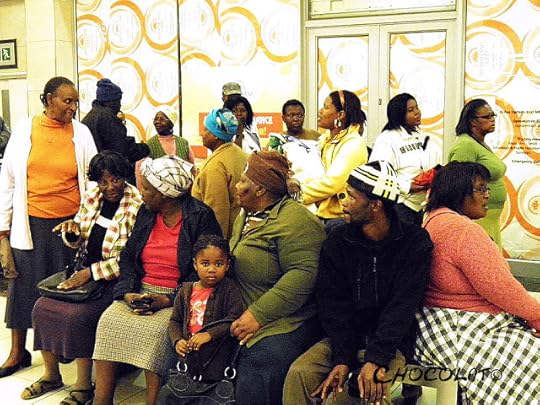
Why are we showing pictures of a shopping mall some of our overseas readers might ask?
The Mdantsane City Mall was opened in April 2008.The opening was attended by the then Premier of the Eastern CapeNosimo Balindlela, Executive Mayor
Zintle Peter; the chairman of developers Billion Group, Sisa Ngebulana as well as
retail managers and local business people.
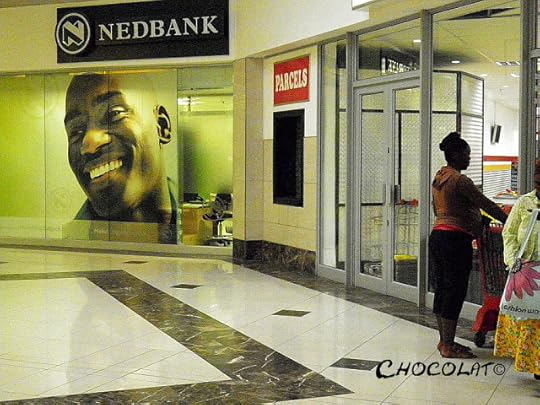
With 91 shops Mdantsane City is the second biggest mall in the province behind Greenarchers in Port Elizabeth.
Balindlela said at the opening:
"Mdantsane people will not have to go to East London now, they will have
their own mall, and this is thanks to the Billion Group. I urge the people
to seize this opportunity and use this mall and be part of its success."
She also thanked the private sector for coming up with an initiative
that would help create employment for the township's people.
"The
government cannot succeed without assistance from the private sector and
this mall is proof of that. Every citizen of Mdantsane has a place in
this mall, and we should all take ownership."

The chairman of the developers Billion group Sisa Ngebulana expressed at the time his happiness that the mall was completed on time so that the people of Mdantsane could use it.
"Before this mall was constructed local people had to go to town to do
their shopping; they also went to Vincent Mall, spending around R50 on
transport. Now with this mall here, people will be able to shop closer
to home," he said. The mall, which is in NU6, was easily accessible as it was on the main
road and had a taxi rank inside it. Ngebulana said that before the group
decided to build the mall, it had undertaken a lot of research, which
had found that Mdantsane residents had considerable buying power.
"The Mdantsane people spend about R650-million annually and we feel that
this mall's turnover could be around that figure. I want to urge people
to use this mall so that retailers continue investing here."
The mall was expected to create about 1 200 jobs.

And this is how the mall looks like in 2012 at pay day.
Plan for a long wait at the cash machines
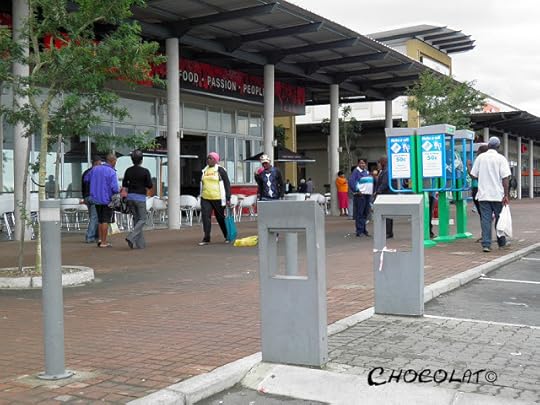
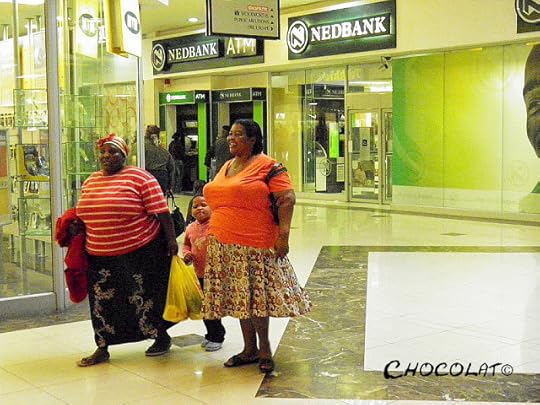

The images are not that great because we had to take them in our secret manner. In South Africa you are not allowed to take pictures in a shopping mall.

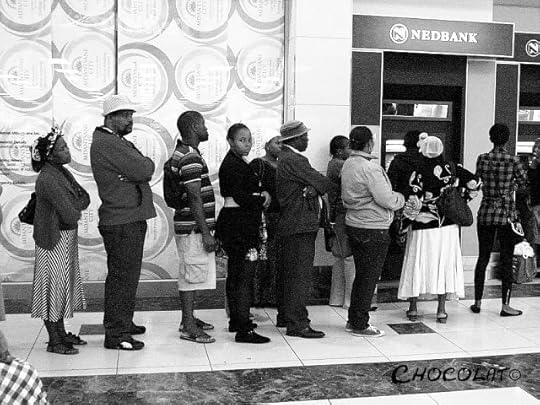
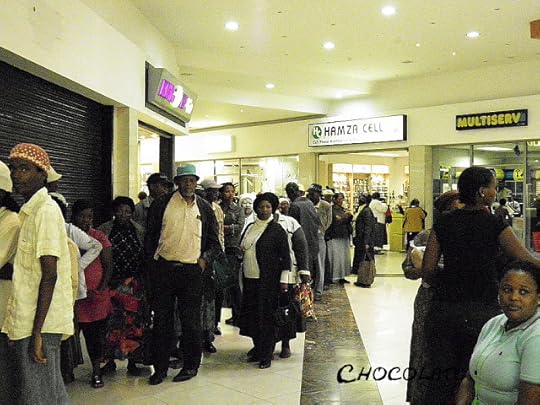
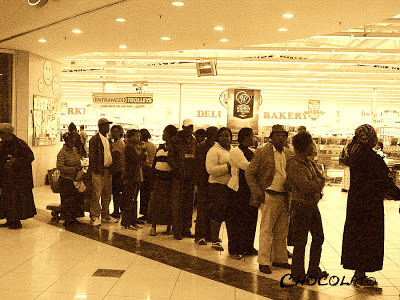
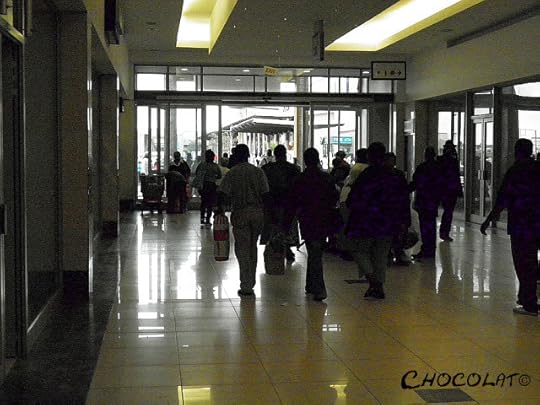
http://feeds.feedburner.com/blogspot/...




